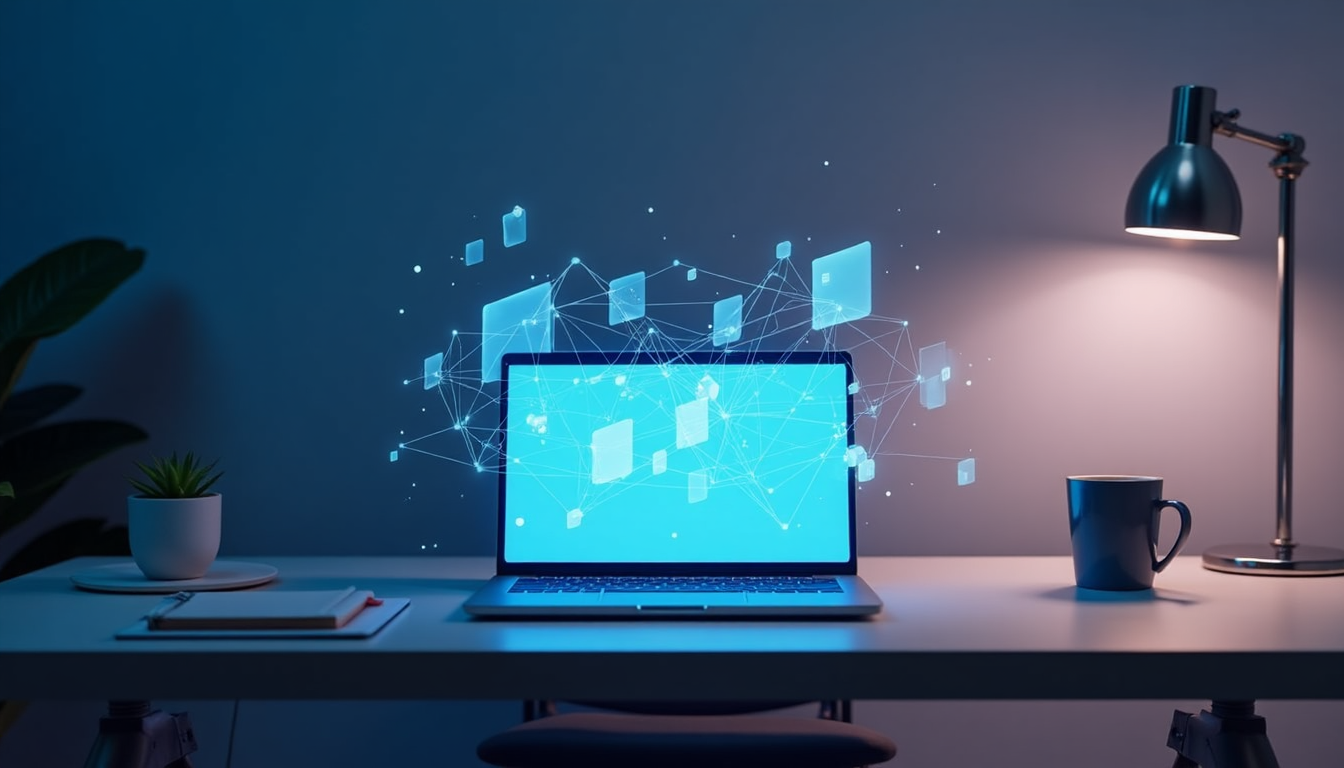10 Proven Tips to Enhance Work Efficiency and Team Productivity
In today's competitive business environment, achieving peak work efficiency and maximizing team productivity are more than just desirable objectives; they are essential components of success. Every organization strives to refine its efficiency improvement strategies, understanding that improved efficiency can significantly impact the bottom line. The quest for increasing efficiency encompasses a multi-faceted approach, integrating effective management practices with a deep understanding of team dynamics. Given its complexity, pinpointing the right work efficiency formula that aligns with an organization's unique requirements demands a thoughtful exploration of proven methodologies and innovative approaches.
This article delves into the tenets of enhancing work efficiency and elevating team productivity, offering a roadmap for leaders and managers intent on forging a more productive and efficient workforce. From establishing clear goals and expectations to fostering a collaborative environment, enhancing meeting efficiency, leveraging technology, and focusing on employee well-being, these strategies are designed to address the multifarious challenges of improving efficiency in the workplace. By adopting these proven tips, organizations can cultivate an atmosphere that not only supports but also amplifies team efficiency, ultimately leading to a sustainably productive work culture.
Set Clear Goals and Expectations
Define Team Objectives
Most organizations today are goal-driven and analytic-oriented, making it crucial to set the right goals that drive performance and align with the organization's long-term vision. Specific, measurable, achievable, relevant, and time-bound (SMART) goals provide a clear framework for team objectives. It is important to involve team members in the goal-setting process, ensuring the goals are co-created and aligned with larger organizational goals, which increases commitment and investment in the outcomes.
Clarify Roles and Responsibilities
Role clarity significantly enhances team performance, as understanding one's roles and responsibilities reduces confusion and aligns efforts with organizational goals. Regularly scheduled meetings to review roles and responsibilities help maintain this clarity and adapt to any changes in team dynamics or business objectives. This practice not only prevents overlap and inefficiencies but also boosts job satisfaction and accountability.
Regularly Review Progress
Regular progress reviews are essential to maintain the momentum towards achieving team goals. These reviews provide opportunities to adjust goals, reflect on achievements, and address challenges, keeping the team aligned and motivated. Utilizing tools like Key Performance Indicators (KPIs) and regular feedback sessions can help track progress and ensure that everyone remains on target towards the collective objectives.
Foster a Collaborative Environment
Promote Open Communication
Open communication in the workplace is pivotal, allowing employees to freely express thoughts, ideas, concerns, and feedback without fear of judgment or repercussions. This culture not only boosts productivity and employee morale but also fosters creativity and innovation by encouraging diverse perspectives. Managers can enhance open communication by practicing active listening, maintaining transparency, and ensuring that feedback mechanisms are in place to support continuous dialogue.
Encourage Team Building Activities
Team building activities are essential for enhancing collaboration and trust among team members. These activities can range from simple social events to complex problem-solving exercises that promote better understanding and cooperation. Regularly scheduled team building events help in breaking communication barriers, fostering a sense of community, and enhancing overall team performance.
Utilize Team Collaboration Tools
Leveraging modern collaboration tools like Slack, Trello, and Microsoft Teams can significantly improve team efficiency and communication. These tools facilitate seamless sharing of information and coordination of tasks, ensuring that team members are aligned and can work effectively from any location. Implementing such tools not only streamlines workflows but also supports a culture of open communication and collaboration, driving the team towards common goals and success.
Enhance Meeting Efficiency
Set an Agenda for Every Meeting
An effective agenda is crucial for keeping meetings focused and efficient. It should clearly outline the topics to be discussed, allocate time wisely, and set clear expectations for participants. By listing agenda topics as questions, participants can better prepare and stay on track during discussions.
Invite Only Necessary Participants
To enhance meeting efficiency, it's important to invite only those who are essential for the real-time decision-making or who bring special expertise. Dana Brownlee suggests inviting only necessary team members and designating others as optional. Handling the exclusion of non-essential attendees with sensitivity is crucial to maintain morale and minimize resentment.
Follow Up with Actionable Notes
After the meeting, promptly distributing minutes that include a summary of discussions, action items, and responsibilities assigned to participants is vital. This ensures that all members are clear on their next steps and can begin work immediately, keeping the project momentum going.
Leverage Technology
Implement Project Management Tools
Project management tools are essential for teams to manage, schedule, and organize tasks effectively, especially in remote settings. These tools offer a variety of functionalities that cater to different project types and team dynamics, making it easier to track progress and collaborate. By integrating these tools with other software like email and Slack, teams can maintain project visibility and improve communication, ensuring that everyone is on the same page.
Use Communication Apps Wisely
Communication apps streamline interactions by providing a centralized hub for messaging, file sharing, and task management, which enhances team collaboration. However, it's crucial to manage these tools to prevent them from becoming a source of distraction. Setting boundaries and using features like message scheduling or status options can help maintain focus and productivity.
Automate Repetitive Tasks
Automating repetitive tasks can significantly boost efficiency by freeing up team members to focus on more strategic activities. Task automation reduces the risk of human error and increases the quality of work by performing routine tasks consistently and precisely. For instance, automation tools can handle data entry, schedule reminders, and update project statuses, allowing teams to concentrate on high-impact work.
Focus on Employee Well-being
Encourage Work-Life Balance
Organizations can significantly enhance employee satisfaction by promoting flexible and remote working options, as 81% of employees value the ability to manage their own schedules. Encouraging managers to focus on productivity rather than hours spent in the office allows employees to work more flexibly, which can lead to increased well-being and job satisfaction. Regular reviews of workloads ensure that employees are not overburdened, supporting a healthier work-life balance.
Promote Mental Health Awareness
It is critical to support mental health in the workplace by providing resources and training. Establishing mental health teams and integrating mental health into orientation programs can foster a supportive environment. Regular training for managers on mental health awareness helps in creating an empathetic workplace where employees feel safe to discuss their mental health issues.
Provide Professional Development Opportunities
Investing in professional development helps in reducing job-related stress and increases employee engagement. Offering flexible training opportunities, including online courses and in-house training, allows employees to enhance their skills without feeling overwhelmed. This not only boosts their productivity but also aids in personal growth, making them feel more valued and satisfied with their jobs.
Conclusion
Through a comprehensive exploration of strategies aimed at boosting work efficiency and enhancing team productivity, this article underscores the critical importance of setting clear goals, fostering collaboration, optimizing meeting productivity, leveraging technology, and prioritizing employee well-being. Each of these components plays a pivotal role in creating a work environment that not only supports but also propels teams towards achieving their objectives. By integrating these proven approaches, organizations can cultivate a culture of efficiency and productivity, which are indispensable in today's fast-paced business landscape.
The implications of adopting these strategies extend far beyond immediate operational improvements. They signify a broader commitment to fostering a sustainable and resilient organizational culture, equipped to navigate the complexities of the modern workplace. As businesses continue to adapt to changing market dynamics, the principles laid out therein offer a roadmap to not only survive but thrive. Thus, leaders and managers are encouraged to reflect on these insights and consider the transformative potential of a concerted effort towards optimizing work efficiency and team productivity in their own contexts, paving the way for continued growth and success.
FAQs
1. What are effective ways to enhance team efficiency and productivity?
To boost team productivity, it is essential to encourage open communication and collaboration among team members. Providing the right resources and tools, focusing on efficient time management and task allocation, and offering training and development opportunities are key. Additionally, fostering a positive work culture and employee motivation, along with tracking progress and analyzing performance metrics, can significantly improve efficiency and productivity.
2. What techniques can increase individual productivity and efficiency at work?
Increasing personal work productivity can be achieved by focusing on one task at a time and taking regular breaks to maintain focus. Tackling the biggest tasks first, setting small, achievable objectives, adhering to the two-minute rule, time-blocking your schedule, making meetings more productive, and delegating tasks are all effective strategies to enhance productivity and efficiency at work.
3. How can one improve work efficiency effectively?
Improving work efficiency involves setting compelling goals, managing your time effectively, and developing thoughtful, productive habits. Attending workshops or courses like Business Mastery can provide further insights into achieving professional success and mastering work efficiency.
4. What strategies can enhance productivity at work?
To boost your productivity at work, manage your energy in addition to your time. Construct a practical to-do list, minimize distractions, and focus on one task at a time. Batch similar tasks together, prioritize maintaining healthy habits, take necessary breaks, and refine your workspace to create an environment conducive to productivity.
Career Mastery Community

How to get a promotion in less than 90 days and learn the 3 pillars to increase your Salary by 30% or more.
More Career Tips, Tricks & Tools
Blog



